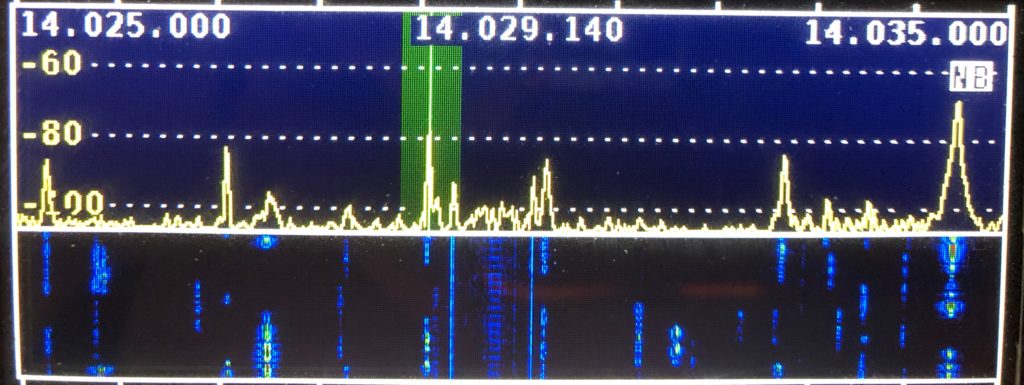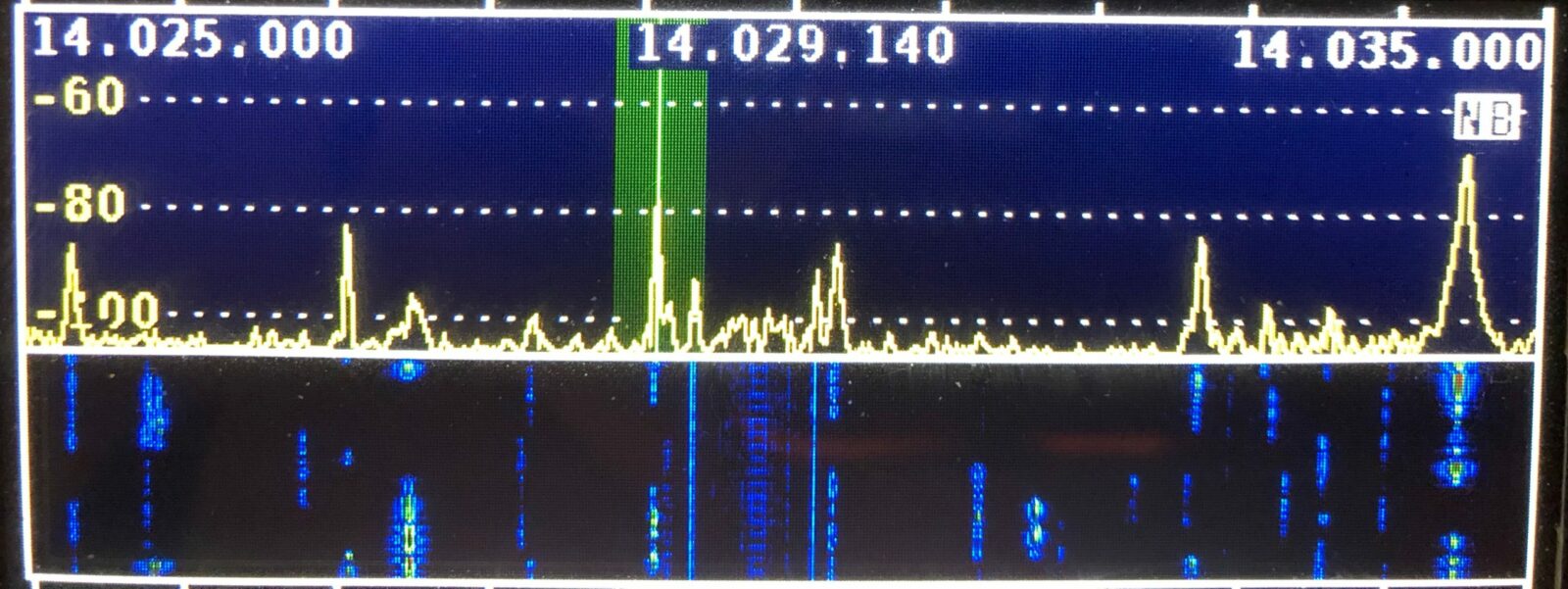I’ve been learning Morse Code through CW Academy. One of the things my instructor has encouraged is getting on the weekly contest, CWT, which runs three weekly, one-hour sessions each Wednesday:
- 1300Z (6am PST) – mostly 20M, some 40M
- 1900Z (noon PST)
- 0300Z (8pm PST) – mostly 40M, some 20M early, 80M later

During the two minutes before it starts and through the official end time, the band comes alive in a way you don’t normally see during daylight hours.
A typical exchange happens very quickly, because they’re all about speed, and roughly like this:
Them: CQ CWT <their call>
You: <my call>
Them: <my call> <their name> <their CWT number>
You: <my first name> CWA TU
Them: TU <their call>
The first 20 minutes is super busy as regulars contact other regulars at speeds well-above 25 words per minute (wpm), approaching 35+ wpm. For comparison, here is the same short story at 10 wpm, 20 wpm, 25 wpm, and 30 wpm.
The event would be completely impenetrable if it weren’t for the terse, predictable exchanges and abundant repetition. For example, I can receive in short bursts at about 18 wpm, though sustained text will need to be slower, and with lots of spacing.
I’ve also relied on the repetition. When listening, I’ll look for someone calling “CQ CWT” a couple of times before jumping in. Theoretically, I can jump in after they send “TU <their call>”, but I find it easier to squeeze in when they start calling CQ again.
Although propagation right is generally poor right now, there are bands that I’ll have better success on depending on the time of day. For example, in the evening session (0300Z), I’ll start with the less busy 20M band, scanning for people camped out on a frequency. I’ll listen until I can get their basic information down then try a contact.
Some folks use these abbreviations for their CWA member numbers: N = 9, T = 0.Less commonly, A = 1, E = 5. For example, if Bob (W1AW) is member 924, he might end with “N24,” or -. ..— ….- rather than —-. ..— ….- Now that I know to look for it, it’s less bewildering.
Another aid is pre-downloading the CW Ops roster from here and pattern matching:
grep -i w1aw cwops.txt
Some of the logging tools like N1MM (free), N3FJP (small fee) and Ham Radio Deluxe (larger fee) can do auto-lookups based on copies of these databases, lists of people who regularly participate in contests, or FAA databases.
A benefit of frequently trying/listening to enough of these is recognizing certain “regular” call signs. A second benefit is other contests like NAQP, 13 Colonies, or even Field Day that run at 15-20 wpm seems soooo much much easier to approach.
There have been more occasions where I’ll tune in a band on the weekend and hear a lot of activity. This site is super helpful to identify which contest you’re hearing, the expected exchange and any rules.
Unlike digital modes like FT8, where the logging rate of contacts is usually automatic at a rate upwards of 90%, CW users tend to not log, especially high-volume contesters. I would estimate I’m lucky to get a third of my CW QSOs officially noted in LoTW. I try to log them in real-time to LoTW/QRZ, and also post a summary to 3830 Scores for posterity (also helpful for quick searching) *
